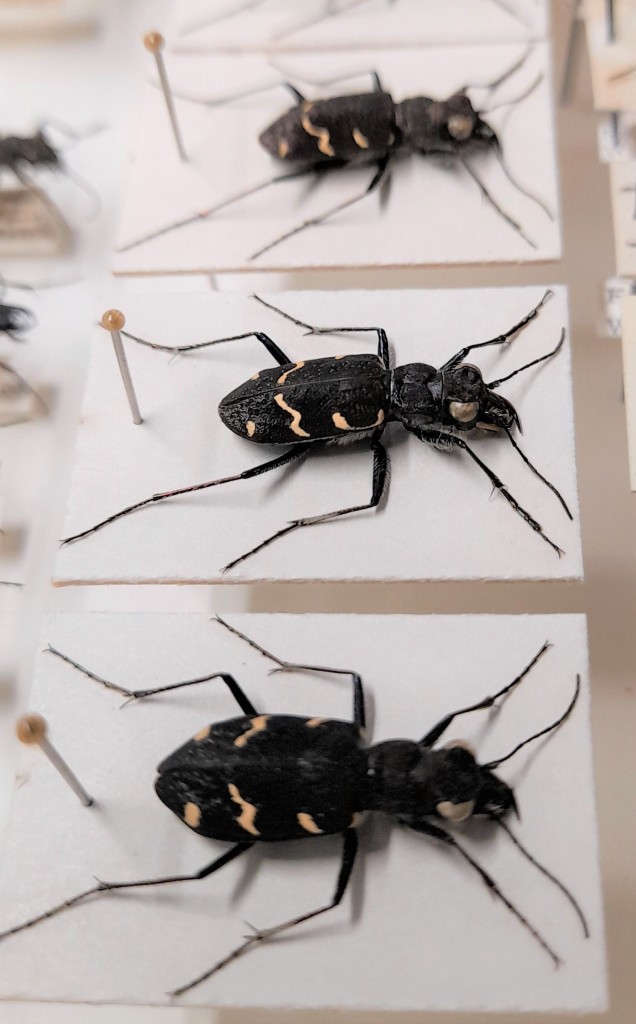In the traditional Chinese calendar, 2022 is the Year of the Tiger. In Chinese culture, tiger is the king of all beasts, symbolizing power, majesty and beauty. Let us to celebrate the beginning of the Chinese New Year 2022 with a selection of ‘tiger insects’ from the Manchester Museum’s Entomology Collection. In this blogpost, a few examples of tiger-like colour patterns in moths and butterflies and tiger-like predatory behaviour in some amazing beetles are presented.
Warning colouration
A tiger’s bold pattern of bright orange body coloration with dark stripes makes them less visible to their prey (it is the so-called disruptive colouration). On the other hand, the conspicuous dark and orange colouration of some moths and butterflies is a clear warning signal to predators. This is the case of the adults of the Garden tiger moth or Great tiger moth Arctia caja. When threatened, this moth can release neurotoxin, making it inedible.
The Garden tiger moth was one of the favourite moths for early collectors who were interested in creating unusual coloration patterns. This species is now protected in the UK; its population has declined by 89% over the past 30 years.


The Harmonia tiger-wing or Harmonia tiger Tithorea harmonia shows the pattern of a toxic butterfly. This species is one of the common and most widespread of the toxic ‘tiger-like’ species that can be found from Mexico to South America. Its larvae feed on Prestonia acutifolia (Apocynaceae), a plant with toxins, and pass the poisons to adults. When eaten by predators, this butterfly leaves an unpleasant taste.
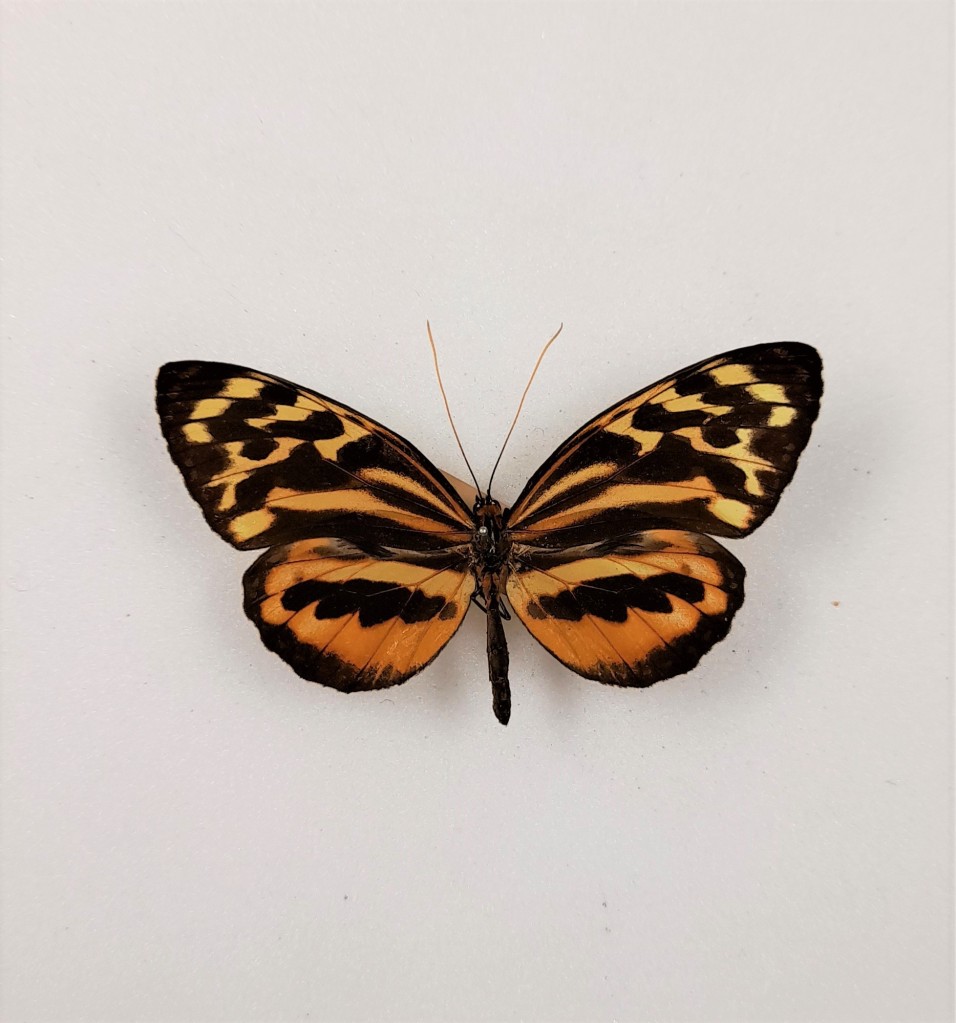
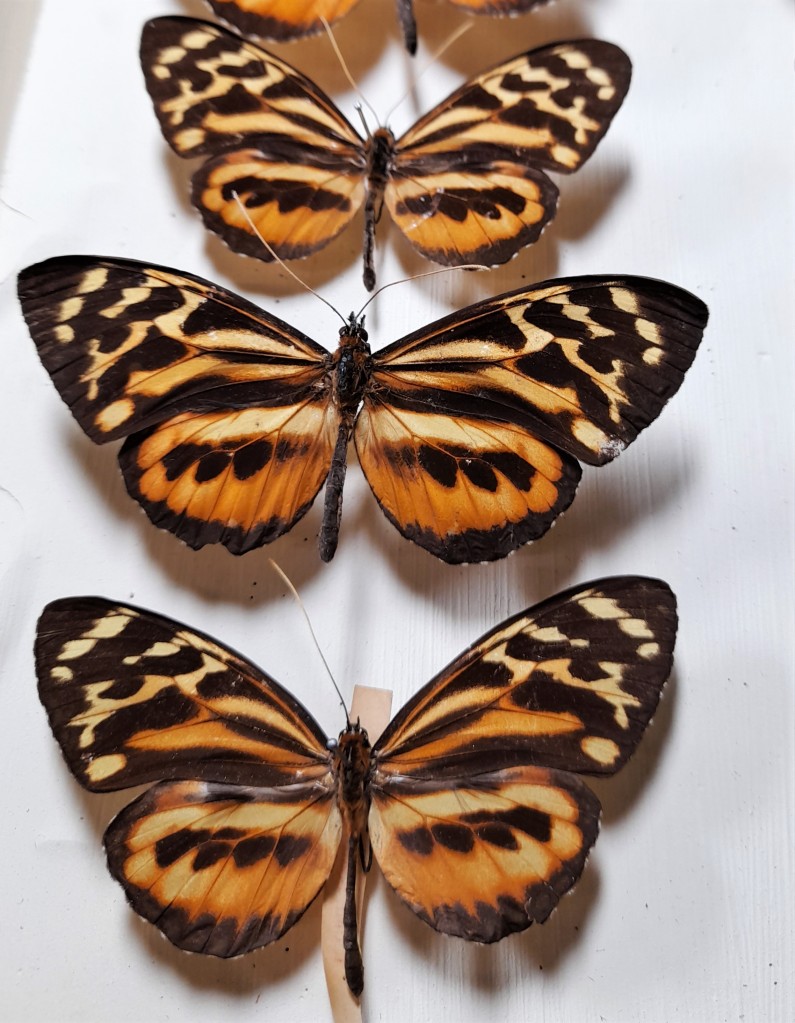
The Tiger butterfly or Striped Tiger Danaus genutia is a very common species throughout India, Sri Lanka, Myanmar, South-East Asia, and Australia (except New Guinea). It has the same appearance as the famous Monarch butterfly Danaus plexippus of the Americas. When the wings are open, both female and male show an orange or yellow-brownish coloration with black venation. Its larvae obtain toxins from plants, which also leave an unpleasant smell and taste to their predators when the adult is eaten.
Aggressive predators and fast runners
Tiger beetles are known for their running speed and their aggressive predatory habits, just like true tigers. It is a large group of some 2600 (sub)species of the subfamily Cincidelinae. Their characteristics include large eyes, long legs adapted for sprinting, and a striking pair of curved and toothed mandibles (=jaws) for catching prey (see video here). The Tiger beetle species Rivacindela hudsoni from Australian deserts is considered the fastest insect in the world, with a running speed of 9 km/hr (120 beetle body lengths per second). More about Tiger beetle adaptations and characteristics here and here.
Tiger beetles lay their eggs in the sand. After hatching, the larvae dig a tunnel and wait in ambush in the tunnel’s mouth for any small invertebrates passing by. The larvae strike and catch their prey with powerful jaws (see video here). Such voracious larvae are known in all species of tiger beetles.


There are five tiger beetle species in Britain, of which the Green tiger beetle Cicindela campestris is the only widespread and common. It is an agile hunter, catching invertebrates, especially spiders, caterpillars and ants. It can be recognised by long bronze legs, metallic green body colouration, and yellow spots on the wing cases.
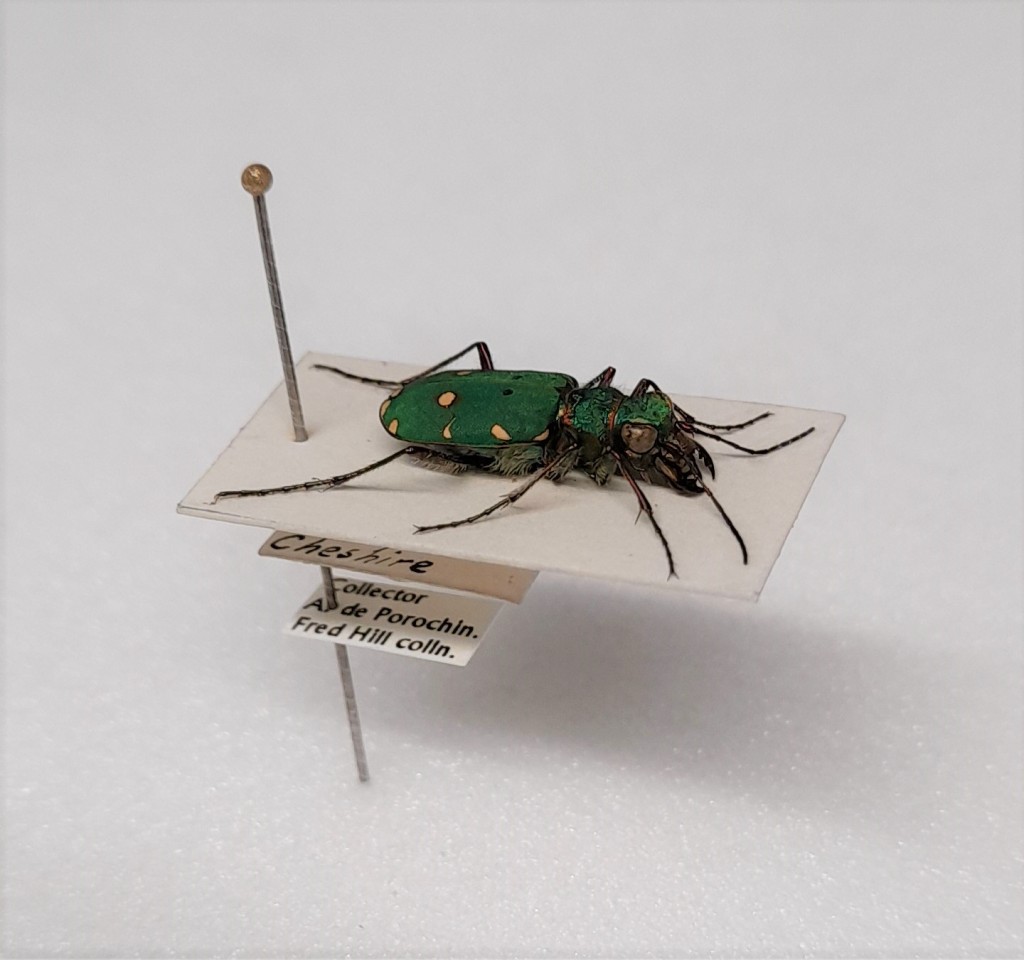
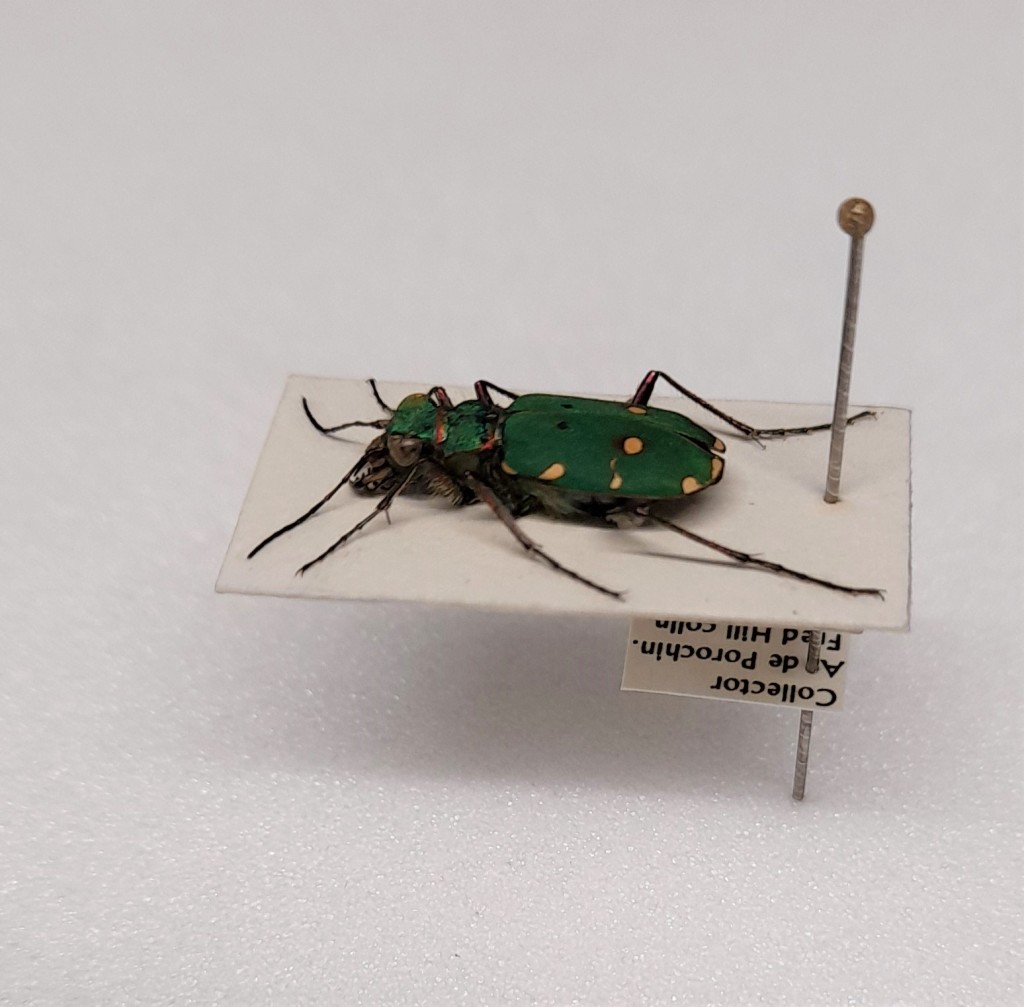
The Wood tiger beetle or Heath tiger beetle Cicindela sylvatica is the largest tiger beetle in Britain, with dark/brown colouration and three or four pale yellow marks on its wings. Half of the population of the Heath tiger beetle has disappeared in the last 25 years in the UK due to habitat loss. This species is under priority status on the Biodiversity Action Plan.

